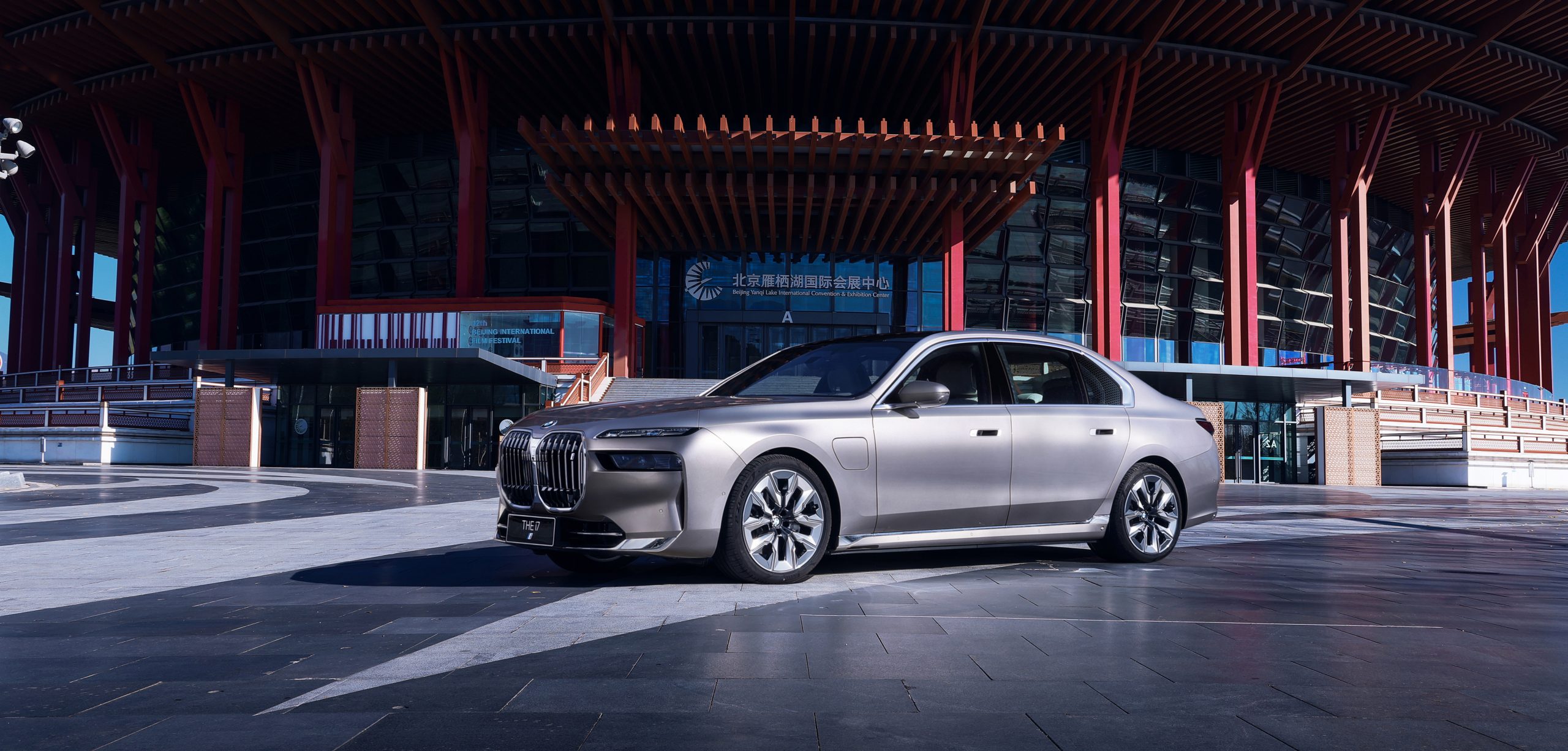BMW i7 Debuts in China! Let’s Check Out the Differences Between the Domestic and Overseas Versions
First, let’s take a look at power and range.
The i7 still uses the fifth-generation BMW eDrive electric drive system, with a maximum power of 400 kW, peak torque of 745 Nm, and 0-100 km/h acceleration time of 4.7 seconds. What do you think of these figures?
The battery cell height of the i7 is as high as 110 mm, with a net capacity of 101.7 kWh and a maximum charging power of 195 kW, which is consistent with the overseas version in terms of battery capacity and maximum charging power. The CLTC range of the i7 was announced to be 650 km during this test drive.
In addition, since the battery capacity is the same as the overseas version, we have also calculated the range under other testing standards as a reference for you. The WLTP range of the i7 is 625 km, and the EPA range is 523 km.
In terms of chassis, the i7 is equipped with the magical carpet air suspension with active comfort and anti-roll functions, which can better suppress the body’s inclination and improve driving stability.
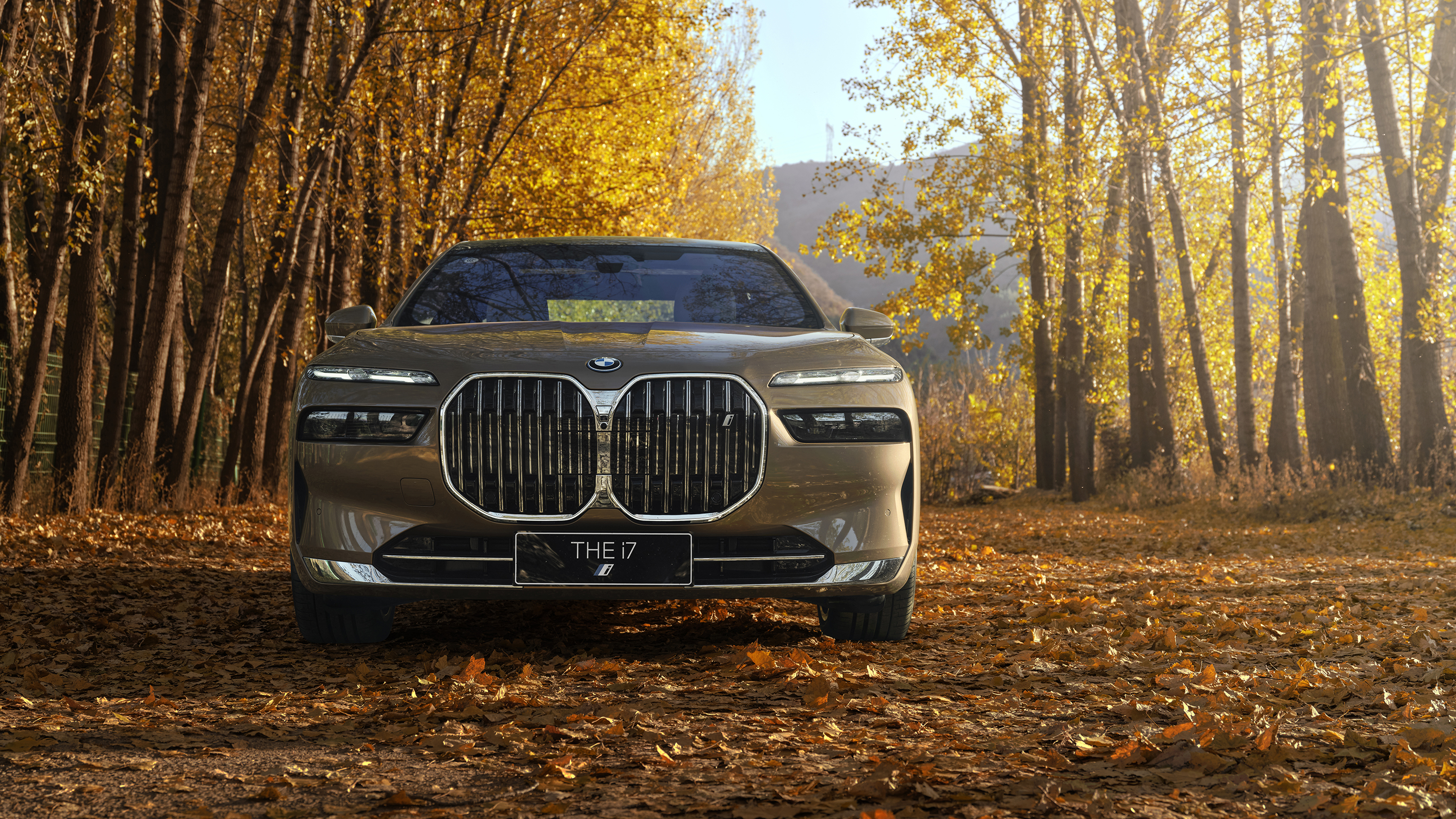
As for driver assistance, the car is equipped with more than 30 ultrasonic, short-range, and long-range sensors, as well as a Mobileye 8 million pixel camera.
Interestingly, the i7’s automatic Pro driving assistance system has been optimized for lane changing based on Chinese driving habits, reducing the start speed from 70 km/h to 30 km/h. Its application range will expand from closed roads such as elevated highways to urban roads.
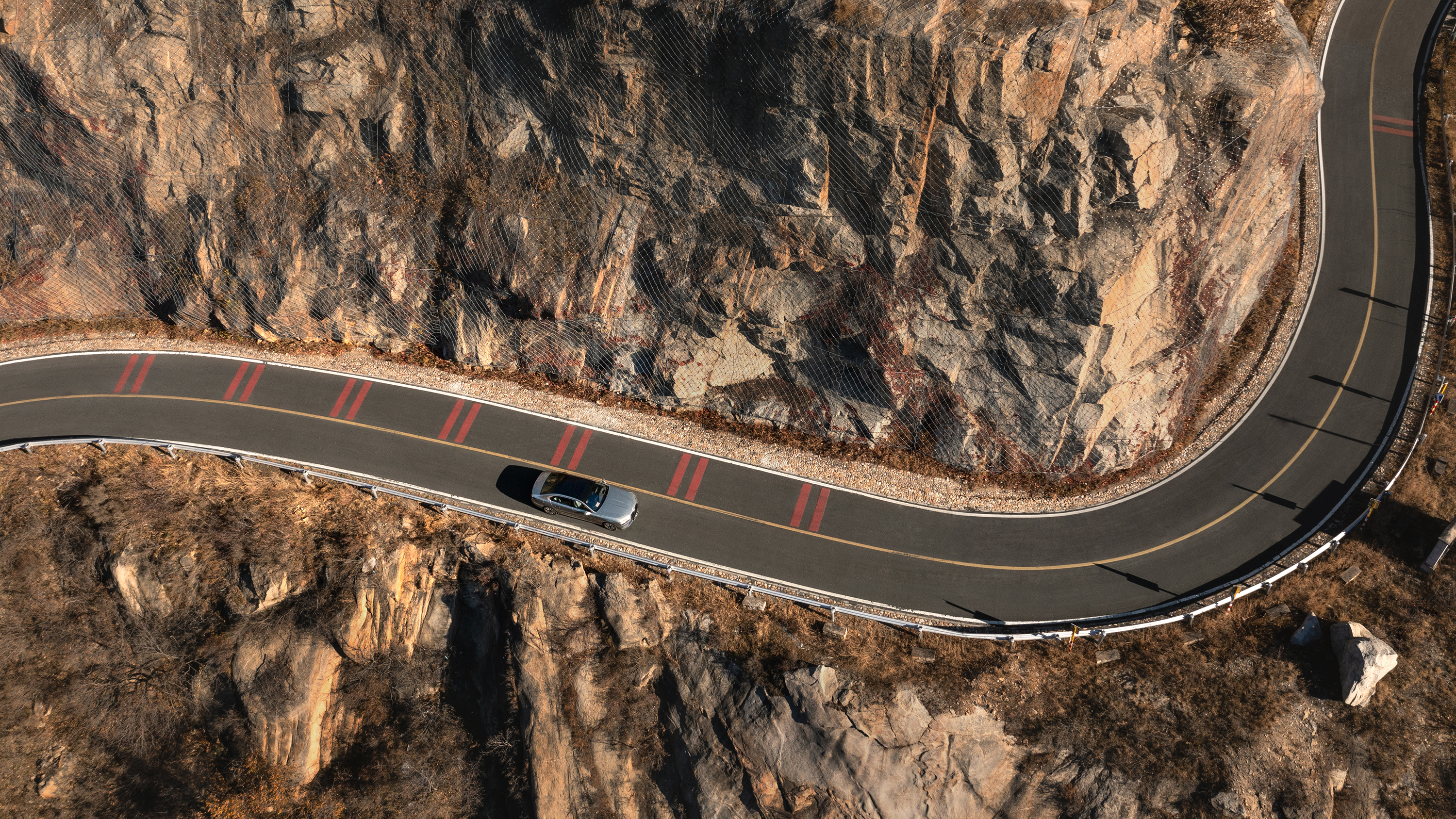
In addition, the memory distance for the reversing function has been increased from the original 50 m to 200 m, and up to 10 parking paths can be stored. This feature is quite useful when entering dead-end alleys or lanes, and this expansion has improved its practicality.
Let’s talk about the i7’s intelligent cockpit.
The overall interior design of the car is not greatly different from that of the foreign version of the i7. The car is decorated with a large number of crystal elements and supplemented with multi-color backlighting. The panoramic sunroof is embedded with an LED light strip. The interior material is made of Merino leather and cashmere. The back seats have a built-in leg rest and can be reclined to a 42.5-degree angle.
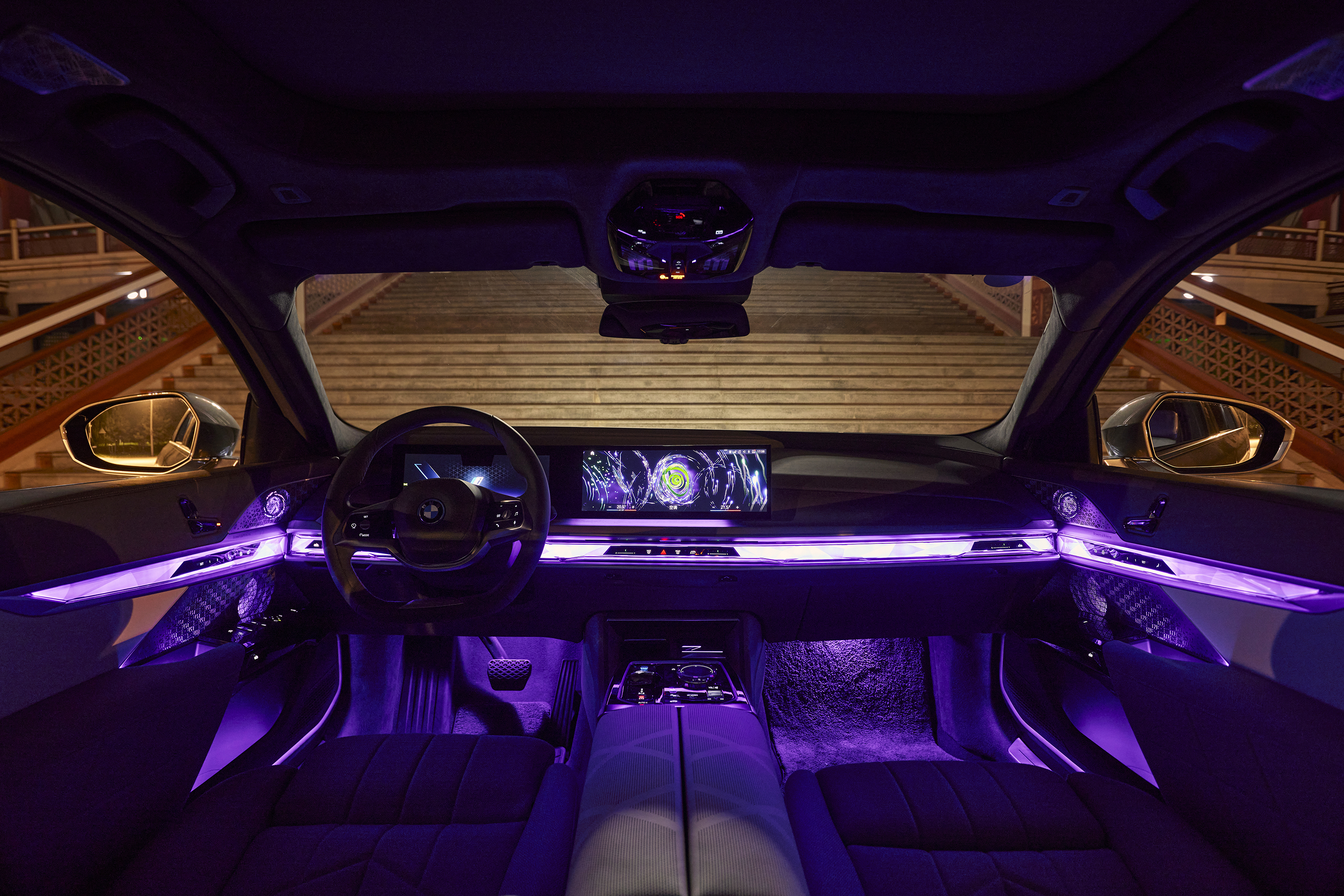
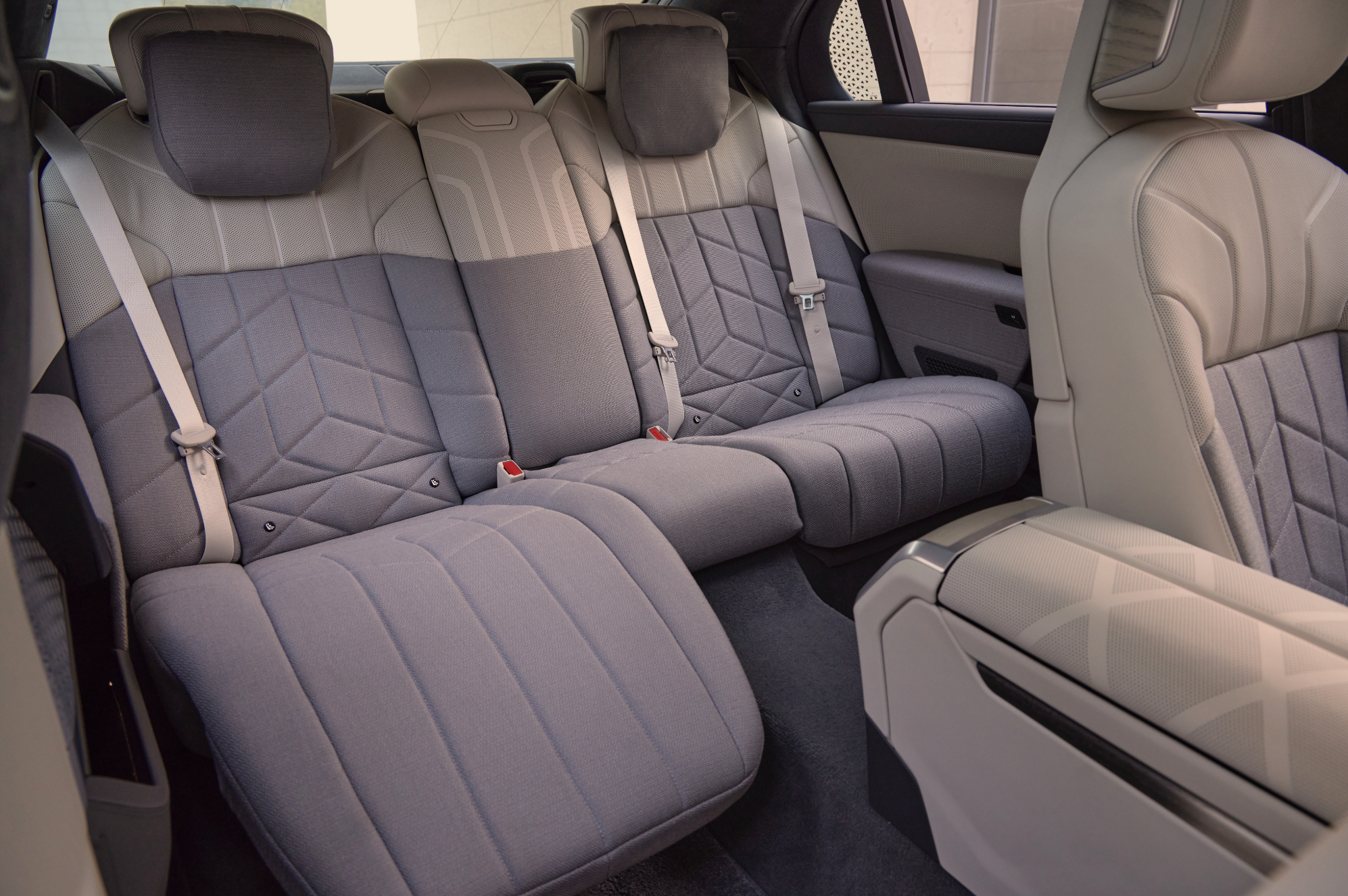
The i7 is equipped with the BMW iDrive 8 system. This is also the first time BMW’s intelligent personal assistant has appeared in China. Four new theme modes have been added: “comfort mode,” “excitement mode,” “digital art mode,” and “theater mode.”

The back seat is equipped with an 8K 31-inch suspended screen, which can play entertainment content in a 32:9 format. The 5.5-inch armrest screen and the Bowers & Wilkins 1,965-watt full-vehicle speaker system with 36 speakers are all present.

The difference is that the back seat entertainment system has added iQiyi and the Huawei App Market. During parking, the large screen in the back seat can play iQiyi video sources, and it is also relatively easy to download other apps. Traditional manufacturers are also entering the intelligent space of the car, and the actual effect of the BMW’s large screen is quite outstanding. I am looking forward to more entertainment facilities settling into BMW in the future.“`
Unfortunately, the price was not announced for the domestic test drive. The presale price in the BMW US region is currently $119,300, approximately 850,000 RMB. Do you think the domestic price will be lower or higher than the overseas price? Do you think i7 has a cost-effective advantage in the current new energy vehicle market in China? Leave your thoughts in the comments below!
“`
This article is a translation by ChatGPT of a Chinese report from 42HOW. If you have any questions about it, please email bd@42how.com.
